Practicable Tips for Launch 📈
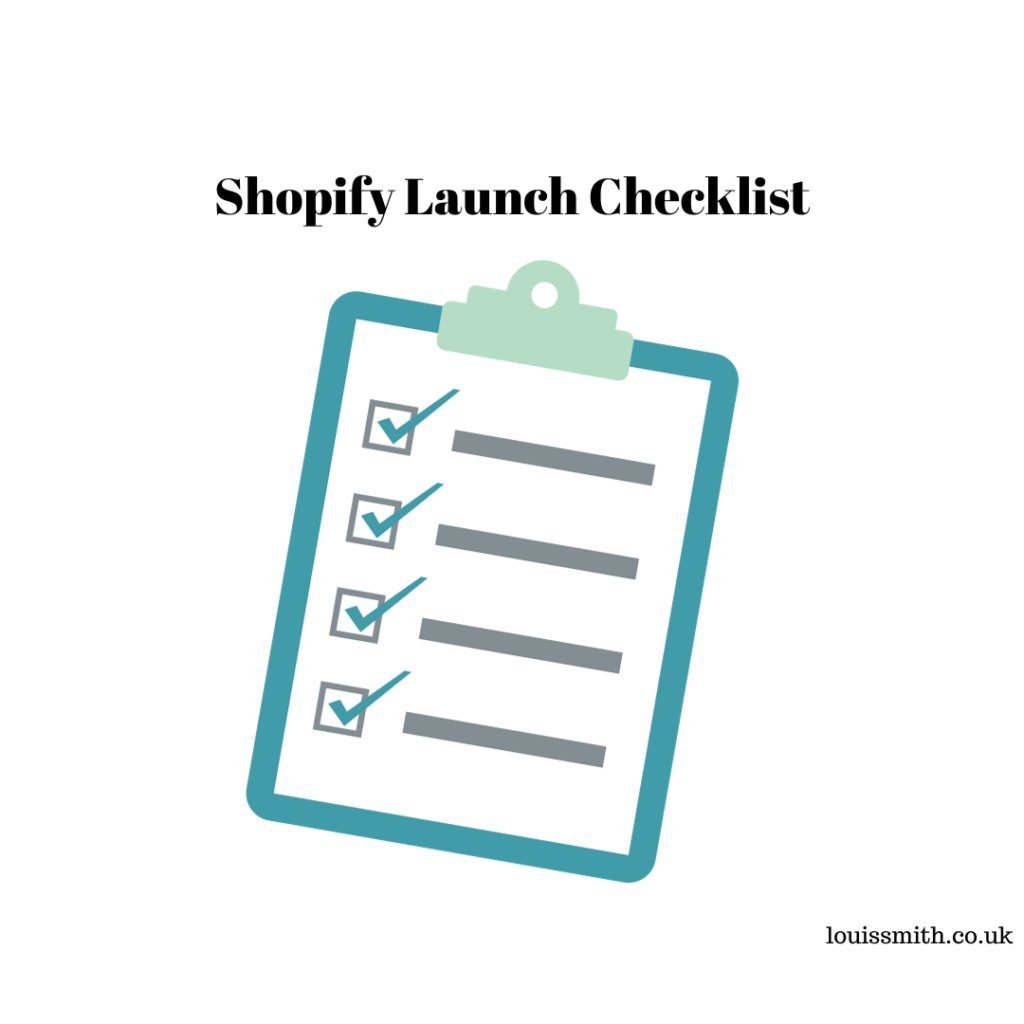
Are you launching your Shopify store soon? Let me show you how to do it right.
Over the years, I have worked with several Shopify brands. I have helped companies set up and launch their store.
I know how exciting and demanding it can be to launch an online store. There’s so much to do and think about!
It’s essential to have a comprehensive checklist in place, ensuring that everything runs smoothly and no critical steps are missed.
A well-structured Shopify launch checklist can guide you through the entire process, from setting up your products and store design to ironing out payment gateways and shipping options.
By following this step-by-step guide, you set up your store properly, with all the necessary features in place.
Create Your Shopify Account 📈
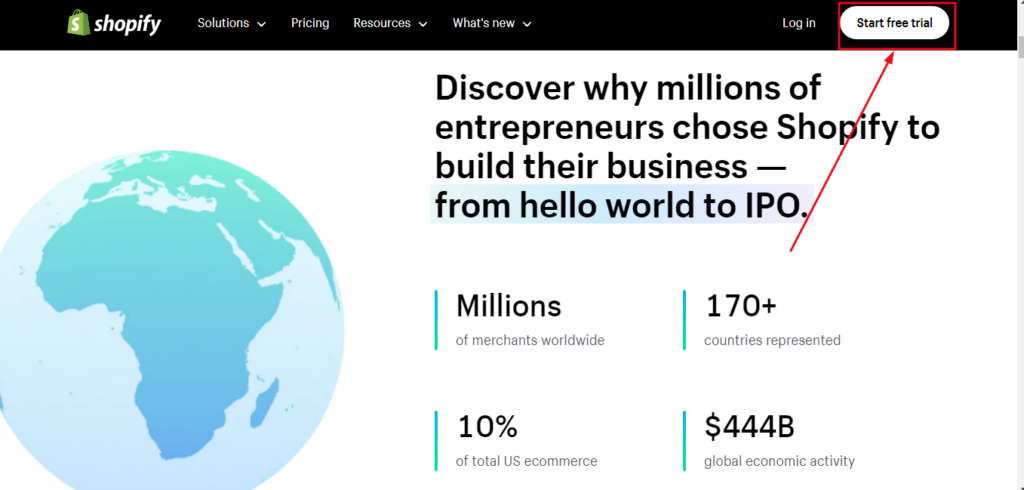
Step 1 – Create Account
The first thing you need to do is create a Shopify account. To do this, simply head over to the Shopify website and click the ‘Start free trial‘ button.
You’ll be asked to provide some basic information about yourself and your business. Don’t worry; this process is straightforward and user-friendly.
Step 2 – Choose a Subscription Plan
Once you’ve completed the initial registration, you’ll need to choose a Shopify subscription plan.
There’s a range of options available, so have a look through the available plans and pick the one that’s best suited to your needs and budget.
You should also know that Shopify offers a 14-day free trial, allowing you to test out the platform and get a feel for its features before committing to a paid plan.
Step 3 – Set up Custom Domain
This is a very important step, and you should carefully consider the domain name to use. Your domain name ensures your store has a professional online presence and is easy for customers to find.
You can either purchase a new domain through Shopify or connect an existing domain if you already have one.
Step 4 – Choose a Theme Option
After you’ve set up your domain, take some time to review and personalise your store’s appearance. Shopify offers a variety of customisable themes, making it simple to tailor your website to match your brand identity.
Explore the available themes and choose one that aligns with your vision.
Step 5 – Create Relevant Pages
At this stage, you should also create your store’s essential pages, such as the Home, About, and Contact pages. These pages provide essential information about your business and help build trust between your online store and potential customers.
More on Setting Up Your Shopify Store
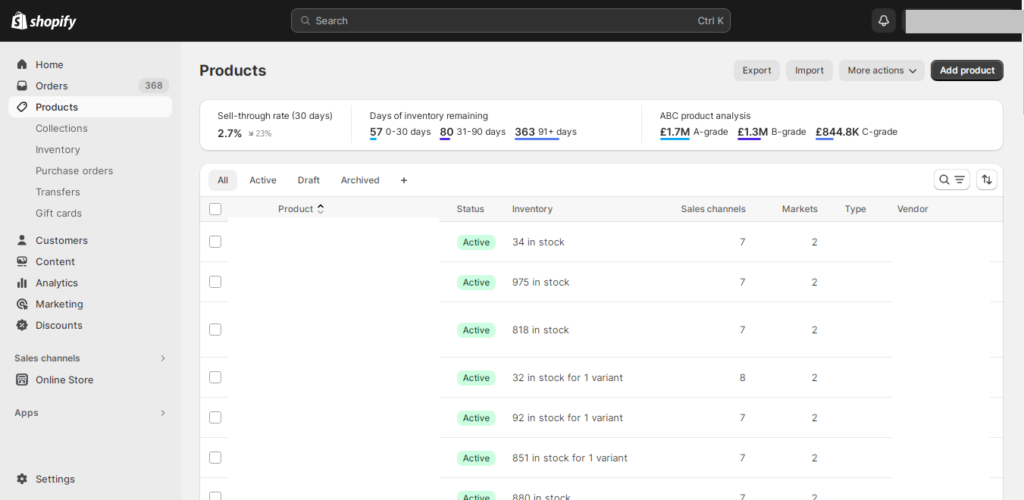
#1 Store Design
When it comes to designing my store, I always try to create a visually appealing and user-friendly experience.
To achieve this, I focus on having clear navigation, easy-to-read text, incorporating brand colours, and using high-resolution images.
While Shopify offers a range of themes and templates, I’d highly recommend taking the time to customise the design according to your target audience and unique brand identity.
#2 Product Listing
A well-thought-out product listing plays a crucial role in boosting sales. To ensure your products grab customers’ attention, provide clear and concise titles, accurate descriptions and eye-catching images.
Also, make sure to optimise product pages for search engines, including relevant keywords and maintaining a logical structure.
#3 Shipping Options
It’s important to provide customers with reliable, cost-effective shipping options to encourage repeat business.
You can review different carriers and compare their shipping rates, time frames, and available services.
Once you’ve selected the ideal carrier(s), integrate them with your Shopify store. Also, clearly communicate shipping options and costs to customers during the checkout process.
#4 Payment Gateway
Enabling smooth transactions is vital for a seamless online shopping experience. Make sure you integrate a reliable payment gateway into your Shopify store. You can consider options such as Shopify Payments or other popular third-party gateways.
It’s important you select a solution that supports various credit cards, additional payment methods, and security measures to protect sensitive financial information.
#5 Setting Up SEO
To drive organic traffic to my client’s store, I usually invest a lot of time in implementing solid SEO practices.
This includes researching relevant keywords and incorporating them in;
- Titles
- Descriptions
- URLs
- Image alt text
- Other on-page content
Additionally, I ensure the site’s structure is search engine-friendly by creating a comprehensive sitemap. You can easily achieve this by using proper header tags and interlinking pages where it makes sense.
Testing the Store - 2 Major Test
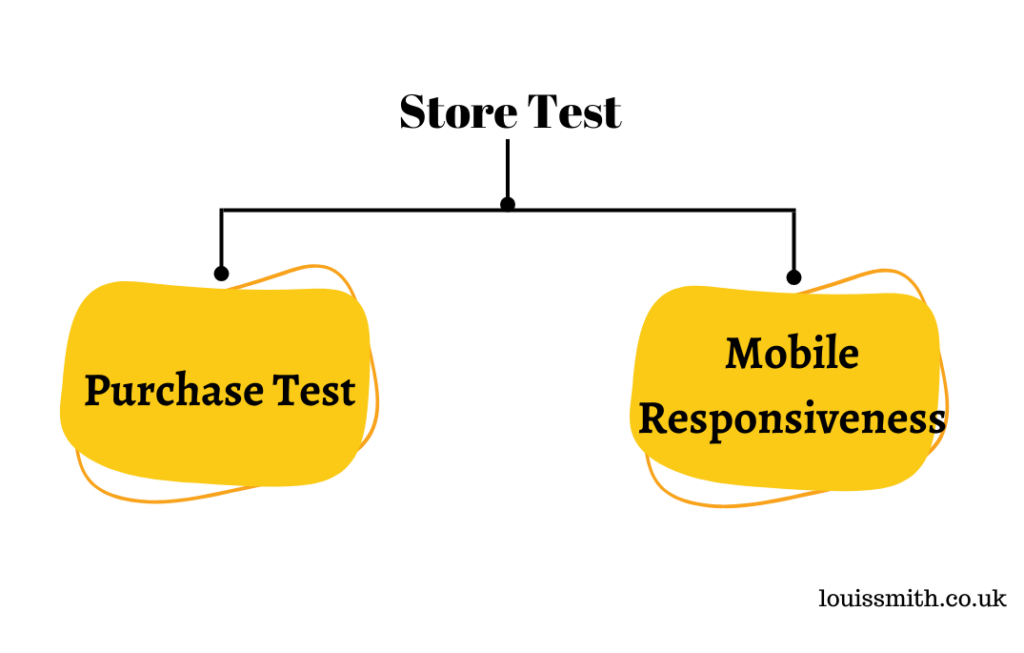
As you’re getting ready to launch your Shopify store, you need to ensure that everything works perfectly and provides a seamless experience for customers.
In this section, I’ll focus on two essential testing areas: purchase tests and mobile responsiveness.
#1 Purchase Test
Before going live, it’s important to perform purchase tests on your store. This is to verify that the checkout process is smooth and error-free.
To do this, you’ll need to create a test product with a minimal price. You will then need to go through the entire purchasing process, from adding it to the cart to completing the payment.
Try to explore different payment methods and shipping options to make sure everything is working correctly.
Additionally, you’ll need to confirm that order confirmation emails are being sent and that the order details appear correctly in your Shopify admin dashboard.
You can use Shopify’s test payment gateway during this process to ensure you are not charged any real payments.
#2 Mobile Responsiveness
Ensuring that my Shopify store is mobile-responsive is essential. A significant number of customers will be browsing and making purchases using their smartphones.
Try to test your store on different mobile devices and screen sizes. Ensure that all texts, images, and buttons are displayed correctly and easy to interact with.
Pay extra attention to the navigation menus, product page layout, and check-out process to guarantee a user-friendly experience on mobile. If you encounter any issues, adjust the store’s design, such as modifying font sizes or repositioning elements, to resolve them.
Preparing for Launch - What to do
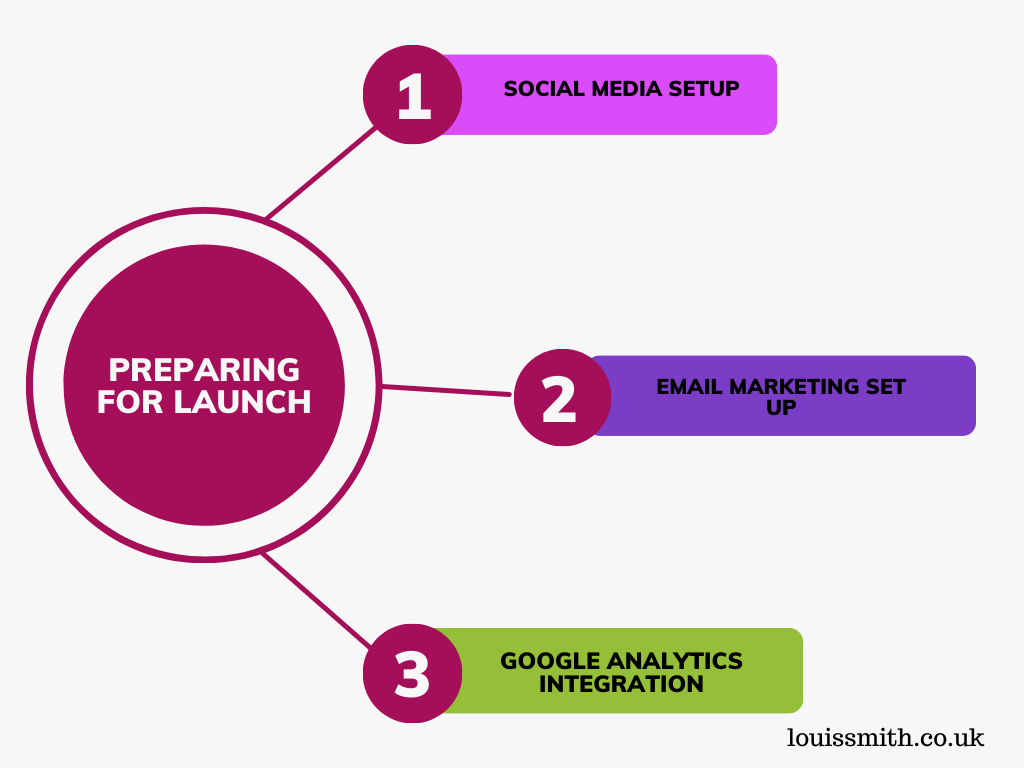
#1 Social Media Setup
It’s important to create a strong social media presence for your Shopify store.
By creating profiles on platforms like Facebook, Instagram, Twitter, and Pinterest, you can get closer to your target audience and engage with potential customers.
Additionally, social media platforms provide excellent channels for marketing products, running promotions, and even offering customer support.
Here are some important tips for social media setup:
- Create profiles on relevant platforms
- Use consistent branding across all channels
- Plan and schedule content in advance
- Connect my Shopify store to my social media profiles
#2 Email Marketing Set Up
Email marketing is a powerful tool for driving conversions and building customer loyalty for your brand. To make the most of this marketing channel, you’ll need to set up an email marketing platform and build a mailing list.
Here’s what I usually do:
- Choose a reliable email marketing platform (e.g., Mailchimp or Klaviyo)
- Integrate the platform with the Shopify store
- Design and set up welcome, promotional, and abandoned cart emails
- Create an enticing opt-in form for the client’s website to collect email addresses
#3 Google Analytics Integration
Integrating Google Analytics into your Shopify store can provide you with invaluable insights into customer behaviour. This data can help inform your marketing strategies and business decisions.
By tracking key metrics like traffic sources, conversion rates, and bounce rates, you can continually refine and improve your online store.
Here are the steps I’ll follow to integrate Google Analytics:
- Set up a Google Analytics account (if you don’t have one already)
- Add the Shopify store’s URL as a new property in Google Analytics
- Obtain Tracking ID from Google Analytics
- Integrate the Tracking ID to the Shopify store settings
Post Launch Activity you should Pay Attention to

#1 Technical Support
Once you have launched your Shopify store, it’s important to provide timely and efficient technical support to your customers.
Ensuring the website runs smoothly and addressing any issues that may arise can help maintain customer satisfaction and potentially increase sales.
You can use Shopify’s customer support resources or even hire a dedicated technical support team if needed.
Reach out to me if you need help managing your Shopify store.
#2 Marketing and Advertising
After the launch, you need to focus on promoting your store through various marketing and advertising strategies.
One way to do this is by leveraging social media platforms to connect with potential customers and showcase your products.
Additionally, email marketing campaigns and paid advertisements can help drive traffic and increase brand awareness.
Remember, the key to a successful Shopify store is not only in the initial launch but also in ongoing post-launch activities like technical support and marketing strategies.
Do you need help planning and implementing marketing strategies for your Shopify store?
I have helped businesses build and grow their online store, and I can help you likewise.
Reach out to me today for a cost-free conversation on how I can help!
GET IN TOUCH
Schedule an SEO session and get started on the path to grow your eCommerce store
You’re just one click away from improving your product rankings, increasing sales, and growing your brand’s market share against competitors.

